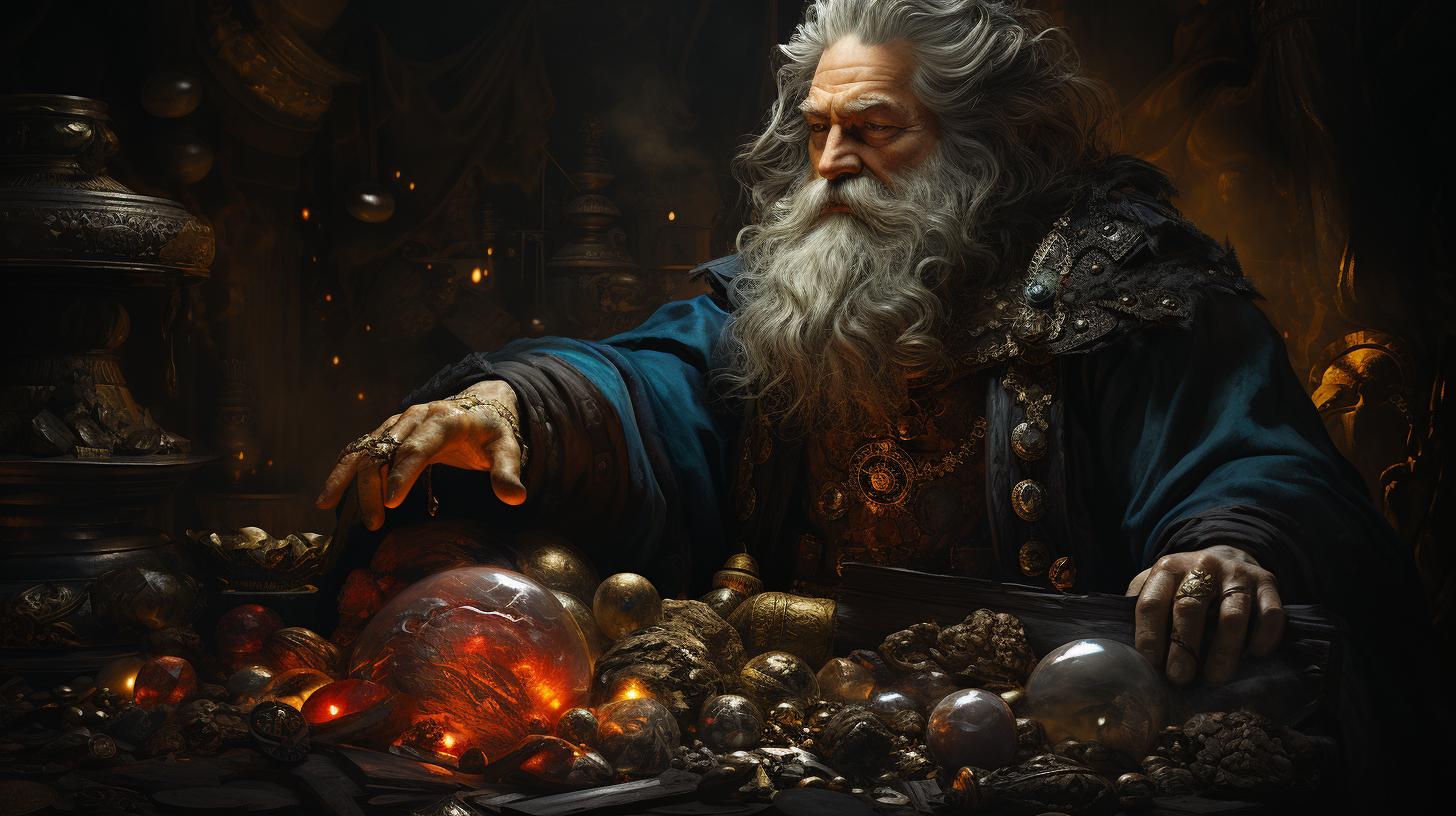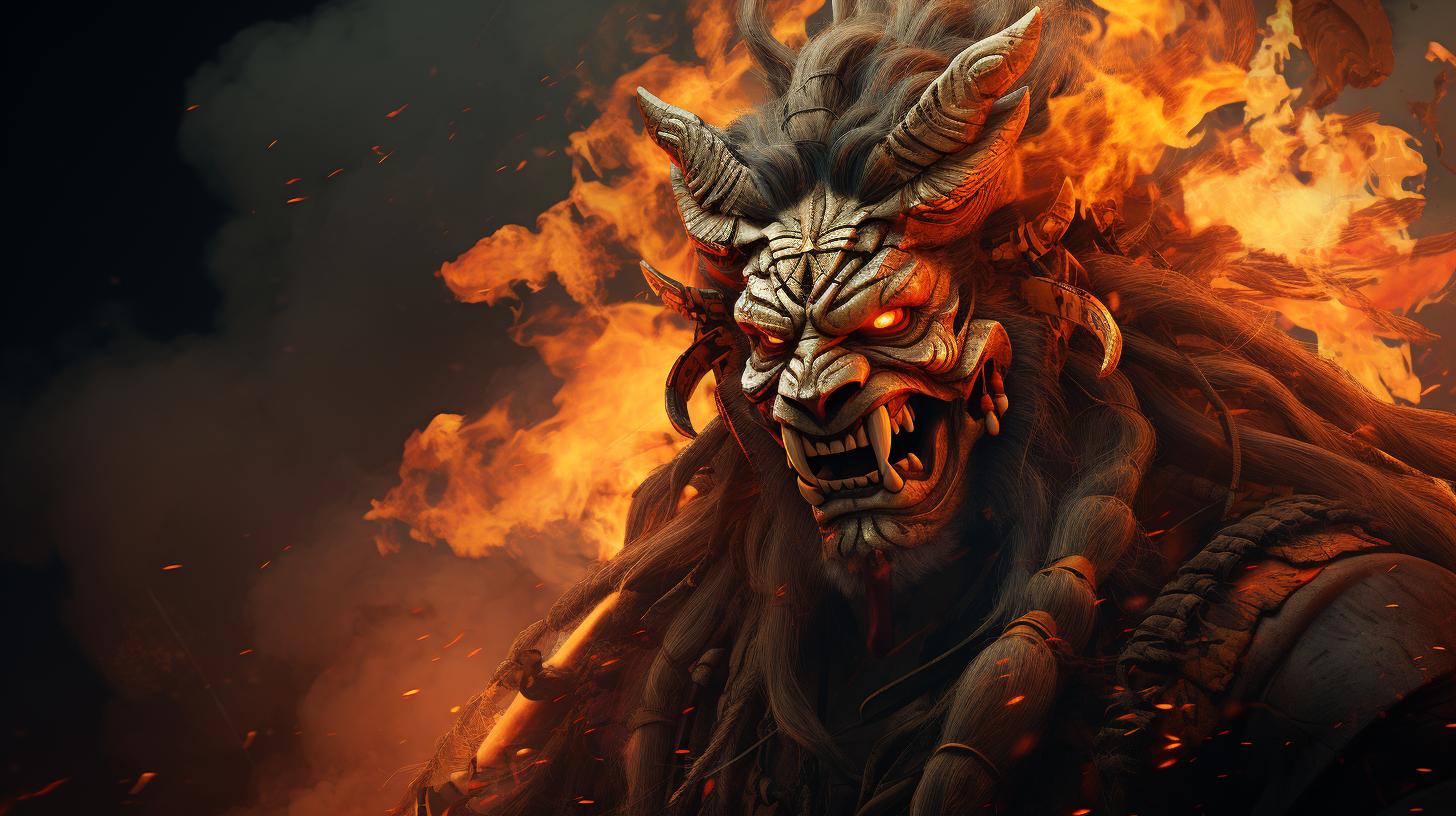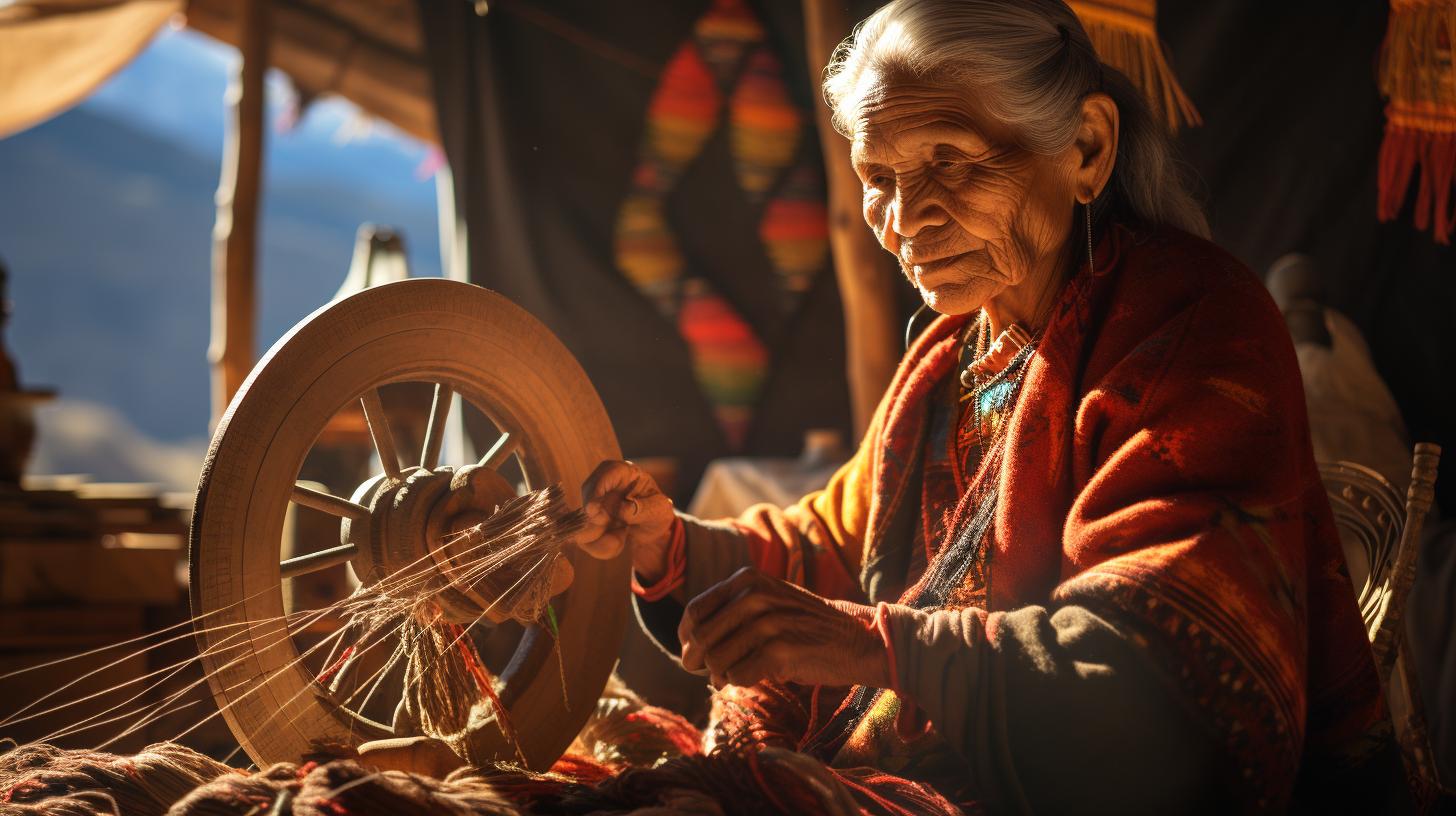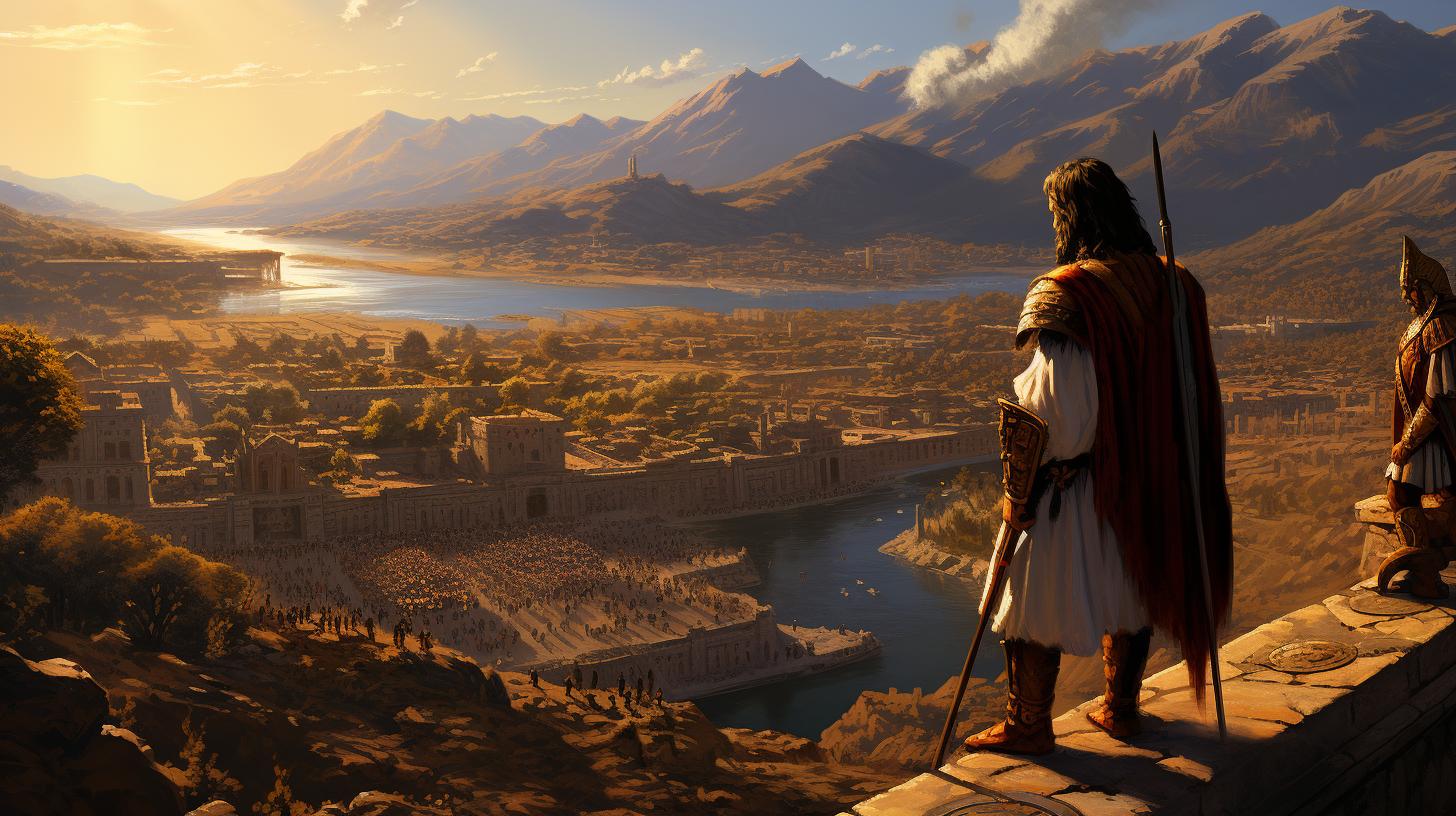Ekkeko Inca God: Unraveling the Abundance and Prosperity of Bolivian Folklore
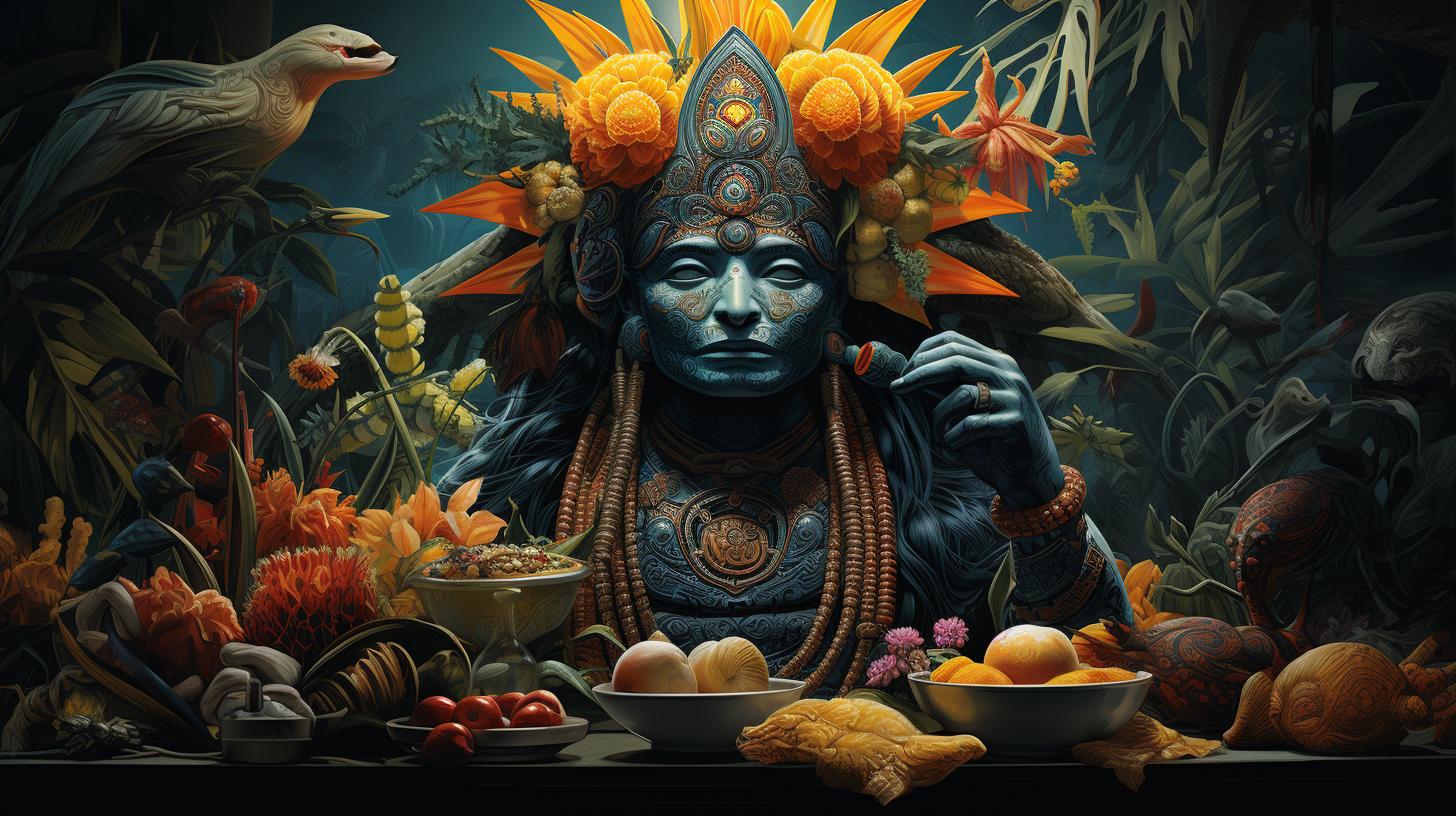
The Ekkeko Inca god is a fascinating figure in the mythology and folklore of the Bolivian altiplano. Originating from the ancient deity of fortune and prosperity, Ekhako, the Ekkeko has been revered for centuries as the god of abundance.
This deity is depicted as a mustached man dressed in traditional Andean attire, carrying bags and baskets of food and household items symbolizing a comfortable and prosperous life. The Ekkeko’s association with wealth and good fortune has made it a central figure in Bolivian and Peruvian culture, particularly during the Alasitas Fair, where people buy miniatures as offerings in hopes of receiving the real items in the future.
With rituals and practices intertwined with its worship, the Ekkeko continues to be cherished as an amulet of happiness and prosperity in contemporary Andean society.
The Ekkeko Inca God: Exploring the Abundance and Prosperity of Bolivian Folklore
The Ekkeko deity holds a significant place in the mythology and folklore of the Bolivian altiplano.
With origins rooted in the ancient god of fortune and prosperity, the Ekkeko symbolizes abundance. This section delves into the origins and significance of this revered deity, exploring its cultural importance in Bolivian and Peruvian societies.
Origins and Significance of the Ekkeko Deity
The Ekkeko deity draws its origins from the ancient god Ekhako, renowned for bringing fortune and prosperity. Believed to be invoked in times of misfortune, Ekkeko figures made of stone, clay, and gold have been discovered across different regions of Bolivia.
Represented as a mustached man donning traditional Andean clothing, the Ekkeko carries bags and baskets filled with food and household objects, symbolizing a comfortable and prosperous life.
Ekkeko in Bolivian and Peruvian Culture
The Ekkeko deity holds a prominent place in the cultural traditions of both Bolivia and Peru.
Devotees offer lit cigarettes as an homage to Ekkeko, and it is believed that he smokes one cigarette per year to ensure prosperity. The deity is also associated with the Alasitas Fair, where people purchase miniature representations of desired items in the hopes of receiving them in full size throughout the year.
This section further explores the multifaceted presence of Ekkeko in the daily lives of Bolivians and Peruvians.
The Legend of Ekkeko in La Paz, Bolivia
One captivating tale associated with the Ekkeko deity dates back to 1781 in La Paz, Bolivia. The legend revolves around a young indigenous girl named Paulita Tintaya, who survived during a siege by relying on the sustenance left near an Ekkeko statue.
This remarkable story highlights the belief in Ekkeko’s protective and nourishing nature, making him a central figure in the folklore of La Paz.
Alasitas Fair: A Celebration of Ekkeko and Good Luck
Experience the vibrant and enchanting Alasitas Fair, a joyous celebration honoring the Ekkeko Inca god and the pursuit of good luck.
This lively event is deeply rooted in Bolivian and Peruvian culture, captivating locals and visitors alike.
Understanding the Alasitas Festival and its Traditions
Delve into the heart of the Alasitas Festival, where traditions and beliefs intertwine. The festival, held annually in Bolivia, is a time for people to seek blessings of abundance, prosperity, and success.
Explore the historical and cultural significance of this cherished event.
Miniatures and Offerings at the Alasitas Fair
Discover the allure of the miniatures market at the Alasitas Fair, where an array of intricate and meticulously crafted items are available for purchase. From tiny homes and cars to miniature currency, these symbolic offerings represent the desire for material wealth and fulfillment.
Fulfilling Wishes through Ekkeko Statuettes and Rituals
Immerse yourself in the fascinating world of Ekkeko statuettes and rituals during the Alasitas Fair. Learn how devotees engage in specific practices, such as placing miniature objects within Ekkeko figurines, to manifest their aspirations and desires for the upcoming year.
Embrace the vibrant energy and profound meaning of the Alasitas Fair, where the Ekkeko Inca god continues to inspire hope, abundance, and good fortune.
Ekkeko’s Role in Bringing Financial Prosperity
Ekkeko, the revered deity of abundance and prosperity, holds a significant belief in bringing financial prosperity to those who worship him. With deep-rooted symbolism and rituals, Ekkeko’s influence on wealth and prosperity is widely acknowledged in Bolivian and Peruvian cultures.
The Belief in Ekkeko’s Favorable Influence on Wealth
Devotees firmly believe in Ekkeko’s ability to attract and bring forth financial success. It is believed that worshiping Ekkeko with devotion and offering prayers can result in improved financial circumstances and a prosperous life.
This longstanding belief is deeply entrenched in the traditions and folklore of the Andean region.
Offering Banknotes to Ekkeko for Monetary Blessings
A common practice among followers is to offer banknotes to Ekkeko as a gesture of faith and hope for monetary blessings. These offerings are made with the belief that Ekkeko will grant financial prosperity and abundance in return.
By symbolically linking money and offerings to Ekkeko, worshippers seek his favor and gracious influence over their financial affairs.
Ekkeko’s Association with Good Harvests and Abundance
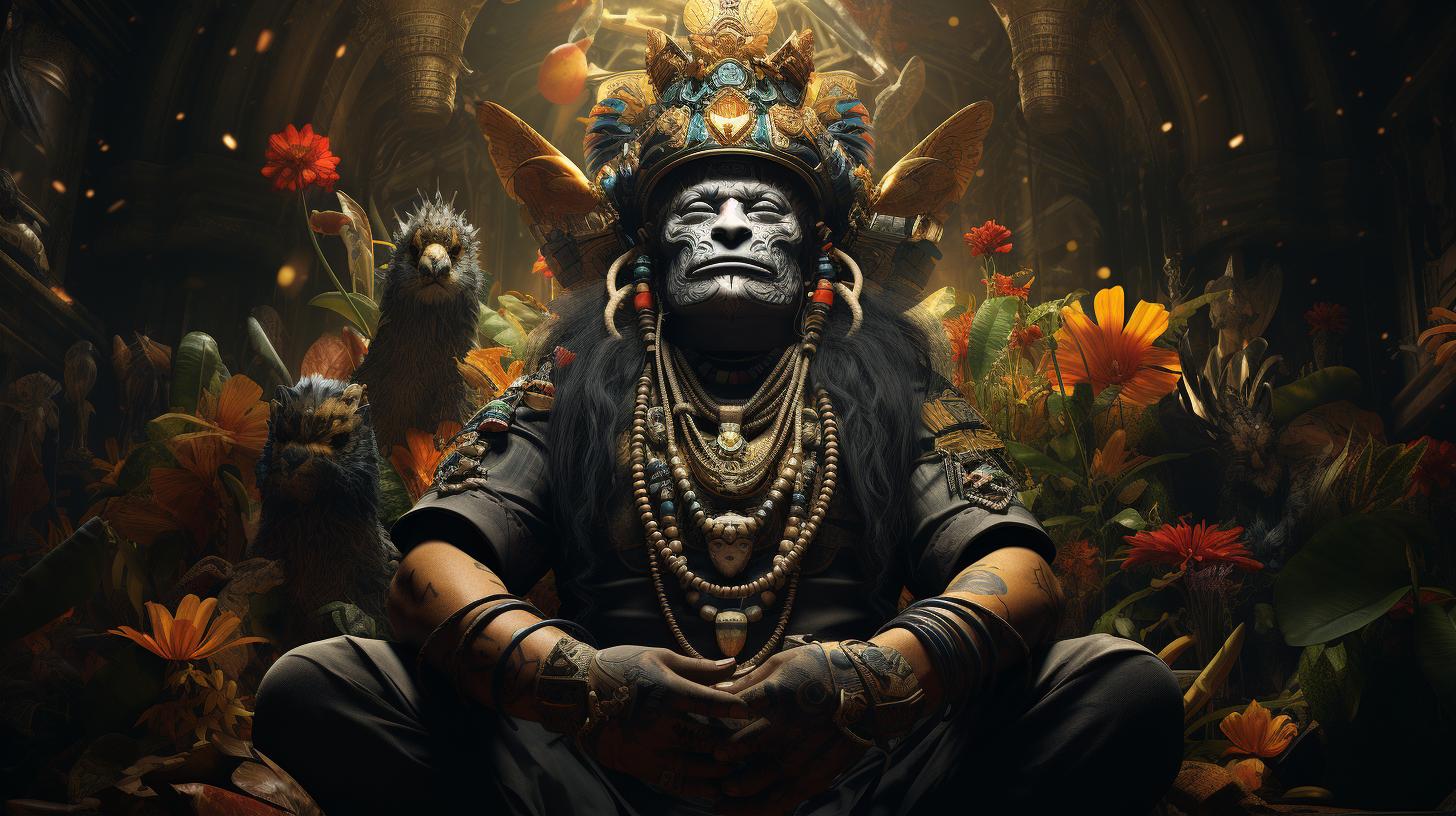
Beyond financial wealth, Ekkeko is also closely associated with good harvests and overall abundance in life. The deity’s presence and worship are believed to bring about bountiful crops, thriving agriculture, and a general sense of prosperity within communities.
Ekkeko is revered for his ability to bestow blessings that extend beyond monetary gains, fostering a sense of well-being and fulfillment.
Through rituals, offerings, and a steadfast belief in Ekkeko’s power, individuals seek to harness the deity’s favorable influence on their financial circumstances and overall prosperity.
This deep-rooted connection to wealth and abundance remains a significant facet of Ekkeko’s role in Andean culture and continues to shape the lives of those who revere the deity in modern times.
Cultural Artifacts: Ekkeko Figures and their Symbolism
Materials and Depictions of Ekkeko Statues
Ekkeko figures are crafted using a variety of materials, each carrying its unique significance. These statues are commonly found made of stone, clay, or gold, reflecting the rich artistic traditions of the Andean region.
Stone carvings showcase the durability and strength associated with the Ekkeko, while clay sculptures emphasize the connection to the earth and fertility. Gold figurines, on the other hand, symbolize wealth and prosperity, reinforcing the deity’s association with abundance.
The choice of material in these figurines contributes to their cultural and spiritual importance.
Symbolic Elements: Bags of Food and Household Objects
One of the defining features of Ekkeko statues is the presence of bags and baskets filled with food and household items. These objects represent the desire for a comfortable and prosperous life.
The bags of food symbolize nourishment and sustenance, ensuring a plentiful harvest and good health. Furthermore, the inclusion of household objects such as miniature furniture and utensils signifies the aspiration for a harmonious and well-equipped home.
The unique combination of these symbolic elements encapsulates the central theme of the Ekkeko as a deity of abundance and prosperity.
Comparisons to Other Deities and Cultural Representations
- The Ekkeko draws parallels to other deities of prosperity and abundance. In the Inca civilization, Inti, the sun god, represented wealth and agricultural success. The Ekkeko shares similar attributes, highlighting the cultural continuity across different indigenous belief systems.
- Comparable deities from other cultures include the Chinese god of wealth, Cai Shen, and the Roman goddess of abundance, Abundantia.
Although geographically distant, these divine figures symbolize the universal human yearning for prosperity and a bountiful life.
- In contemporary Bolivian culture, the Ekkeko’s iconic image can be found in various forms of artwork, from paintings to textiles.
These artistic representations further reinforce the cultural significance and enduring appeal of the deity.
The Ekkeko’s cultural artifacts, such as its statues crafted from diverse materials and adorned with symbolic elements, serve as tangible representations of the deity’s association with abundance and prosperity.
By exploring the materials, symbolism, and cultural comparisons surrounding these Ekkeko figures, we gain a deeper appreciation for the richness of Andean folklore and the enduring relevance of the Ekkeko Inca god in modern times.
Rituals and Practices: Interacting with Ekkeko
Within Andean culture, engaging in rituals and practices is a significant aspect of connecting with the revered Ekkeko Inca god. These rituals aim to seek blessings of abundance, prosperity, and overall well-being.
Let’s explore some of the key practices associated with interacting with Ekkeko:
Cigarette Offerings and Their Significance
One common ritual involves offering lit cigarettes to Ekkeko. In Andean belief, it is believed that Ekkeko smokes a single cigarette per year to secure prosperity for his followers. Devotees often place a lit cigarette in Ekkeko’s mouth as an offering, symbolizing their desire for financial abundance.
This act is believed to establish a spiritual connection, heightening the chances of receiving economic blessings.
Inserting Wishes into Ekkeko Statuettes
Another practice involves inserting written wishes into Ekkeko statuettes. Followers express their desires by writing their wishes on small pieces of paper and carefully placing them within the hollowed openings or compartments of Ekkeko figurines.
It is believed that Ekkeko holds the power to grant these wishes, acting as a conduit between the spiritual and material realms. This ritual offers a tangible way to communicate hopes and dreams to the deity.
Special Days and Times for Prayers and Petitions to Ekkeko
Devotees often observe specific days and times for prayers and petitions to Ekkeko. Tuesdays and Fridays at noon or midnight are considered particularly auspicious for reaching out to the deity. Followers gather in their homes or visit designated sacred spaces, where they engage in earnest prayer and make requests for abundance, good fortune, and blessings.
These designated times are believed to enhance the potential for Ekkeko’s positive influence in one’s life.
In conclusion, the rituals and practices associated with Ekkeko facilitate a deeper connection between individuals and the Inca god of abundance and prosperity.
By offering lit cigarettes, inserting wishes into statuettes, and selecting specific days and times for prayers, followers express their desires for financial well-being and overall prosperity in their lives.
The Modern Appeal of Ekkeko: Beyond Tradition
In contemporary Andean culture, the Ekkeko Inca god continues to hold a significant place.
While rooted in ancient traditions, Ekkeko’s influence extends beyond religious beliefs and folklore, permeating various aspects of daily life.
Ekkeko in Contemporary Andean Culture
Ekkeko remains a beloved symbol of prosperity and good luck among the indigenous communities of Bolivia and Peru. His presence can be seen in homes, shops, and public spaces, acting as a constant reminder of abundance and happiness.
Ekkeko as an Amulet of Prosperity and Good Luck
Many individuals carry small Ekkeko statuettes as amulets, believing they bring financial fortune and blessings. It is believed that possessing an Ekkeko figurine attracts good luck and opens doors to opportunities for prosperity.
The Ekkeko serves as a source of hope and inspiration, fostering a positive mindset and attracting positive energy.
Ekkeko’s Influences on Art, Fashion, and Souvenirs in Bolivia
Beyond religious and cultural significance, Ekkeko has made a remarkable impact on Bolivian art, fashion, and souvenir industries. Artists often depict Ekkeko in their paintings and sculptures, showcasing the deity’s unique characteristics and vibrant colors.
Furthermore, Ekkeko-themed fashion items, such as clothing and accessories, have gained popularity among both locals and tourists. Souvenir shops offer a wide array of Ekkeko-inspired products, allowing visitors to take a piece of this rich tradition home with them.
- Ekkeko’s influence is reflected in vibrant paintings and sculptures
- Fashion industry embraces Ekkeko-themed clothing and accessories
- Souvenir shops offer a variety of Ekkeko-inspired products
The Ekkeko Inca god has successfully transcended generations, retaining its significance as a symbol of abundance and happiness in contemporary Andean culture.
Its modern appeal manifests in various aspects of life, from personal beliefs to art and fashion, enriching the cultural fabric of Bolivia and Peru.
Ekkeko Inca God: Embracing the Spirit of Abundance and Happiness in Today’s World.
The Ekkeko Inca god continues to captivate and inspire individuals in contemporary Andean culture. This ancient deity represents more than just a historical figure; it embodies the spirit of abundance, prosperity, and happiness.
Today, the concept of embracing the Ekkeko’s essence has transcended traditional beliefs and become a symbol of hope and positivity in our modern world.
As we navigate the challenges of today’s society, many individuals turn to the Ekkeko Inca god as a source of inspiration and motivation. By embracing the Ekkeko’s spirit, we acknowledge the importance of cultivating a mindset centered around abundance and happiness.
This mindset encourages us to focus on the positives in life, attract good fortune, and create a sense of fulfillment and contentment.
Embracing the spirit of abundance means adopting an optimistic outlook and actively seeking opportunities for growth and prosperity. It involves acknowledging our blessings and expressing gratitude for what we have, while also striving for personal and professional success.
The Ekkeko Inca god serves as a reminder to appreciate the present moment and to manifest our desires through positive thoughts and actions.
- Cultivating an abundant mindset:
1. Focus on gratitude: Take the time to reflect on the blessings in your life and express gratitude for them. Develop a habit of acknowledging and appreciating the abundance that surrounds you.
2. Set intentions and goals: Align your thoughts and actions with your desires. Visualize success, set clear goals, and take steps towards achieving them. The Ekkeko’s spirit encourages us to be proactive in creating the life we envision.
3. Practice positivity: Adopt a positive attitude and mindset, even in the face of challenges. Embrace optimism and resilience as you navigate life’s ups and downs. The Ekkeko’s spirit reminds us that a positive outlook attracts positive outcomes.
- Spreading happiness and abundance:
1. Share kindness: Cultivate a sense of community by spreading kindness and compassion. Small acts of generosity can have a ripple effect, creating a more harmonious and abundant world.
2. Support others: Offer a helping hand to those in need and celebrate the successes of others. By supporting and uplifting those around us, we contribute to a collective sense of abundance and prosperity.
3. Live authentically: Embrace your true self and pursue activities that bring you joy and fulfillment. By living authentically and following your passions, you inspire others to do the same, fostering a culture of happiness and abundance.
In embracing the spirit of abundance and happiness embodied by the Ekkeko Inca god, we can create a life filled with positivity, fulfillment, and prosperity. By adopting an abundant mindset and spreading happiness to others, we contribute to a more vibrant and thriving world.
.












